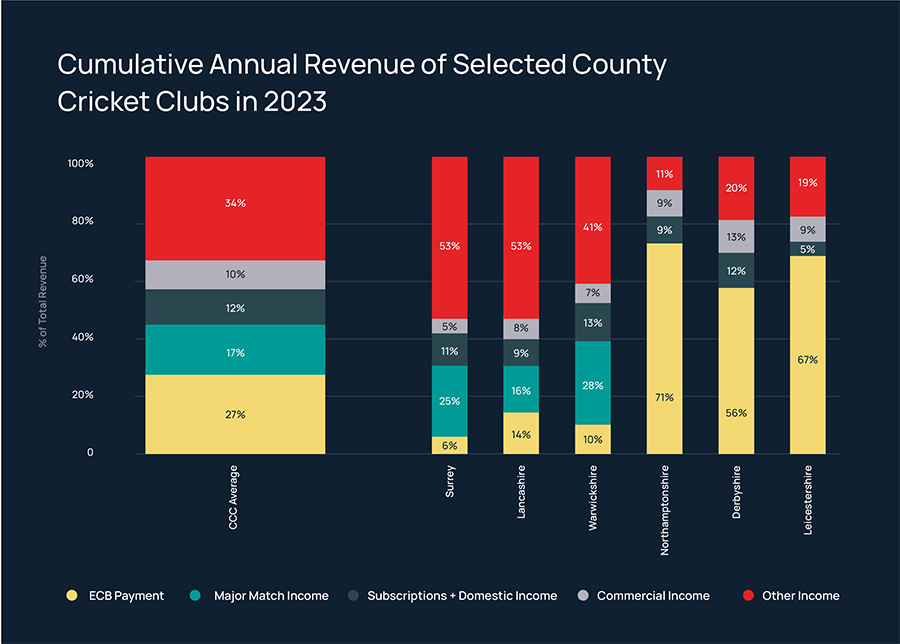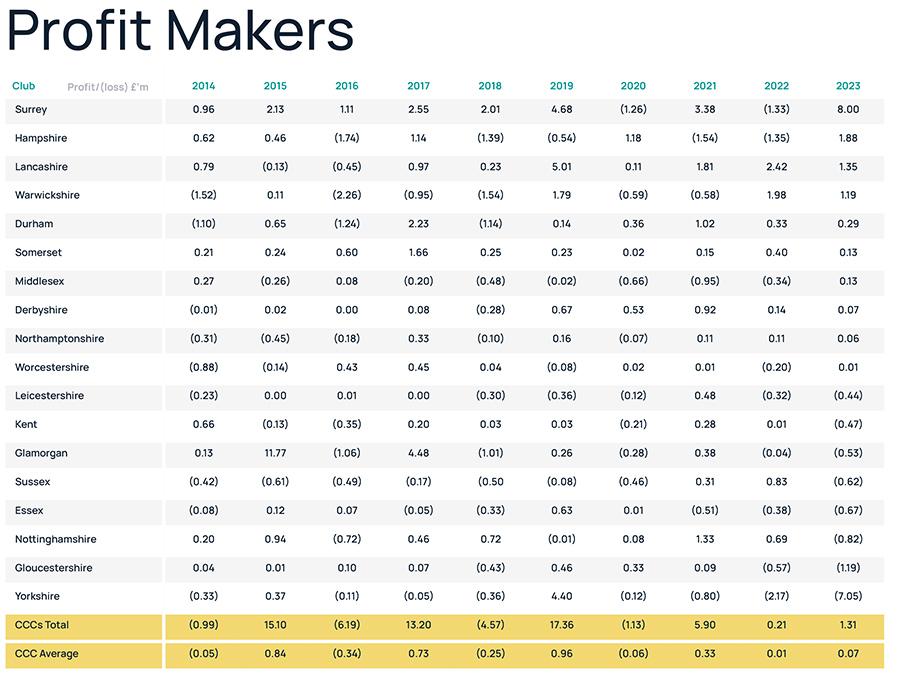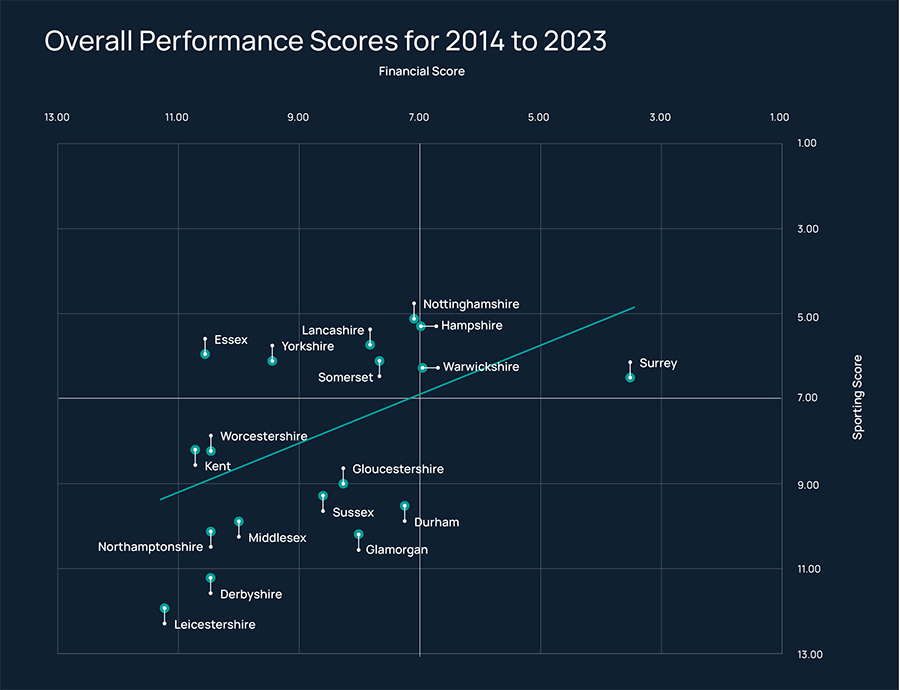
A new report into the health of county cricket has found that eight of the 18 clubs involved ran at a loss in their last-reported financial year. While the Big Three of Surrey, Warwickshire and Lancashire generated £134.6 million in revenues, new investment from The Hundred Group may enable the chasing pack to level the financial playing field.
Leonard Curtis is an independent restructuring and turnaround specialist based in the UK. In recent years, it has commenced a series of reports on the Business of Sport. The first looking into rugby union finances was published in 2024, and the firm has now released a second paper, this time into cricket.
The Leonard Curtis Cricket Finance Report has been published as the sport stands on the cusp of a £520 million investment from the sale of equity in The Hundred’s eight franchises. And while it finds that more organisations operate at a profit than a decade ago, three leading county cricket clubs make up 44% of revenues generated across 18 institutions.

Source: Leonard Curtis
Surrey, Lancashire and Warwickshire generated £134.6 million in revenues for 2023, while the 18 men’s clubs brought in a total of £306.1 million. That uneven spread means that eight clubs ended the financial year with a loss, rather than a profit – a figure that has been relatively consistent over the last decade. And while it represents improvement from 2022, when half of the 18 operated at a loss, it signifies the precarious state many clubs find themselves in.
But Leonard Curtis’ report, which includes a first-ever Financial Performance Index for the 18 first-class counties, also comes at a time when things could be about to change for country cricket. As the sport stands on the cusp of a £520 million investment – a windfall from the sale of equity in The Hundred’s eight franchises.
Haves and have-nots
The Hundred, a 100-ball tournament launched in 2021, is currently funded by the England and Wales Cricket Board (ECB). But with private investment soon to potentially see capital filtered down to the associated counties, clubs operating at a loss could be handed a lifeline – alongside insight from Leonard Curtis into where they might get most value from spending it.
The report was launched at an event at The Kia Oval on July 15th, where former Ashes-winning England captain Michael Vaughan – who wrote the report’s foreword – shared his views on the state of county cricket and what the windfall from The Hundred could do for the game.

Source: Leonard Curtis
“The Hundred money allows the 18 first-class counties to look to the future rather than simply survive from one summer to the next,” he said. He added, “I believe the smaller counties must spend their windfall on player pathways and getting their facilities up to scratch.”
The report concludes that while The Hundred investment offers a short-to-medium term revenue boost, it cannot support the county model indefinitely. Counties will need to develop long-term commercial strategies that extend beyond this windfall, or risk further polarisation between the ‘haves’ and ‘have nots’.
Long-term viability
Professor Rob Wilson, who is a Professor of Applied Sport Finance and co-author of the Leonard Curtis Cricket Finance Report, explained, “This report raises questions about the long-term viability of the county model. Investment in The Hundred may provide some medium-term relief, but only if invested strategically and to build infrastructure. Cricket in England and Wales remains overly reliant on central distributions, TV rights, and international fixtures at a handful of Test grounds. While significant profits have been posted in isolated cases over the past ten years, they are exceptions to the rule. Without ECB support and income from The Hundred, it is questionable whether some counties could survive even for a single season.”

Source: Leonard Curtis
A series of recommendations for the use of The Hundred investment in the report included maintaining cash reserves and carry out strategic spending to help ensure financial sustainability; adopting financial prudence over the long-term, with careful management of any sudden influx of money; and resisting the temptation to make flashy but unsustainable investments – with managing stakeholder expectations a key part of that, as the report cited “pressure from players, staff and agents for higher salaries and benefits” as something to be pushed back against.
The report also cited the opportunities of backing women’s cricket could have as a source of fresh revenue. Like women’s football in the UK, women’s cricket finds itself in a pivotal moment in England and Wales, with a new professional structure introduced this summer featuring teams connected to each of the 18 first-class counties.
Gessica Howarth, Vice-President and a founding member of Sphera Partners, a growth equity investment firm focused on women’s sport, was also on the expert panel which contributed to the report. Speaking on the changes, she added that the new domestic structure “presents a significant opportunity to unlock and engage an emerging fanbase, while harnessing the scale and support of the established men’s county system.”
